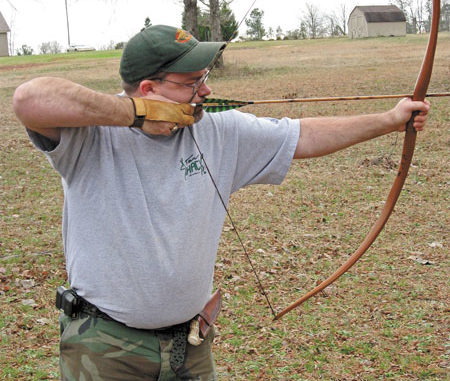
Try “early” bows for early-season deer. It doesn’t take a $700 compound to fill a tag.
There is something mystical about the feel of a good primitive bow. It seems to come alive in the archer’s hands. Light, responsive and, when shot instinctively, they are very quick-handling.
In our time of advanced technology, the simplicity has a great appeal to many hunters. With a primitive bow, it’s easy to imagine yourself as a primitive man, facing the challenge of the hunt.
Chris Cade, a high-school biology teacher from Abbeville, is a devotee of primitive and traditional archery. He began building bows and arrows in 2000 and has gone from the level of craft to art. A master craftsman, he makes bows, arrows and knives (www.cadesbowsandblades.com) and, being of Scottish descent, often hunts in a camouflaged kilt.
Cade has researched, experimented and put in hours of practical field experience in perfecting his technique for making foreshafted cane arrows.
“The data gathered has highlighted and validated the reasons ‘primitive man’ used foreshafted projectiles so extensively through time,” Cade said. “The building and hunting with foreshafted cane arrows is the ultimate experience in traditional archery.”
Cade has taken squirrels and deer with his handmade bamboo arrows, tipped with stone points. He has taken hogs with Japanese Arrow Bamboo shafts fitted with Sitka spruce foreshafts and 160-grain Grizzly broadheads, as well as with stone points.
When a foreshafted arrow is shot at a big-game animal, the main shaft usually separates from the foreshaft and drops free. After the animal is butchered, the foreshaft may be recovered and fitted to the shaft for future use. The only exception is when a stone point is used and fractures against a bone.
Some of Cade’s greatest hog hunts have been on Alexicarri Plantation in Abbeville, Ga., which was featured on a Discovery TV documentary “Pig Bomb,” which detailed the explosion of wild hogs and their changing character thanks to interbreeding with Russian boar. Eddie Parker, a friend of Cade’s, met Tim Beach, the owner of Alexacarri, and arranged a hog hunt for Cade.
Their first hunt was under way when a tropical storm moved in. While scouting, they had spotted between 20 and 30 hogs, but with a gloomy weather forecast, they had only a couple of hours to hunt. Cade and Parker approached a food plot and saw a nice hog feeding. Cade elected to make a stalk, with Parker circling behind some brush to be in a back-up position. Cade stalked until he had a 15-yard broadside shot at the hog. He drew, aiming slightly behind and above the joint on the hog’s front leg.
“To my horror, at the instant of my release, the hog must have spied a nice bunch of rye and turned toward me for a mouthful,” he said. “I had struck the boar in the nose and was wondering how the heck I drew back on a broadside hog and stuck him in the nose.”
The 155-pound boar turned and ran directly toward Parker, who got off a shot at 10 yards but missed. The hog traveled a short distance before collapsing. Later examination revealed the arrow had penetrated 20 inches, entering just under its left jaw, punching through the neck and into the chest cavity, severing the aorta and pulmonary artery before coming to rest against a rib on the right side. The main shaft separated perfectly when the boar ran, and after butchering, the foreshaft and broadhead were recovered and re-fitted to the shaft.
Cade used the same arrow design to take a doe on his farm. He has the greatest respect for the older does that lead their family groups, teaching young bucks and does to elude hunters, coyotes and other dangers. These wary, old does are not easy to hunt, and they often spoil a hunter’s chance at a trophy buck that is nearby. They move quietly, appear like a vapor, and when in doubt, will use the infamous “head bob” or foot stamp to get a hunter or predator to reveal their presence.
After missing a young buck with his flintlock muzzleloader on a previous hunt, he asked himself, “Why any self-respecting Native American would lay down his bow for a flintlock?”
Two weeks later he was hunting the same area when a lone doe appeared. He gave a series of grunt calls, and she disappeared into the tangle. After traveling more than 100 yards, she reappeared silently near his position. She had large ears and was obviously a dominant doe, the kind he calls “muley heads” because of their long ears.
The doe picked her way carefully down a path toward Cade’s stand, with another doe trailing behind. As she moved behind a small shrub, he came to full draw. When she cleared the shrub, she sensed something amiss, but not before the arrow made an audible slapping sound as it hit home. The doe dropped, then rose swiftly but unsteadily. She moved a few feet, but Cade released a second arrow in the fading light at a difficult, quartering-away shot and was rewarded with the satisfying sound of another hit. This time, she was down for good.
Some may not consider a doe a trophy, but matching wits with a dominant doe is a challenge and worthy of trophy status. This is especially true when the animal is taken with bow and hand-made bamboo arrows.
Cade hunts with several bows made by James Parker of Creston, N.C., who is a master bow-maker and flint-knapper. Parker (www.huntworthyproductions.com) crafts several styles of bows, including longbows, recurves and horsebows. He also makes foreshafted bamboo arrows and regularly takes deer with them. In addition, he is a master flint-knapper. One of the arrows he has on display has a point made of deer antler with razor-sharp, knapped flakes of obsidian inserted into the antler.
If you are interested in the ultimate hunting challenge, then primitive or traditional archery may be just the ticket. If you meet a burly individual wearing a camouflage kilt in the deer woods, tell Chris Cade hello for us.
Arrow choices for primitive archers
Primitive archers use a wide range of materials in producing arrows. Some use Port Orford cedar for target and hunting shafts. Heavier spines and weights are needed to facilitate penetrations, because primitive bows typically propel arrows at 180 to 200 feet per second, as opposed to modern compound bows, which may exceed 300 feet per second.
Most primitive shafts require straightening, which can be done by heating the shaft with a propane torch — taking care not to overheat — then grasping the arrow with both hands and bending it over the heel of your hand in the opposite direction from the curvature. Hold it in this position briefly, then apply a wet, cold cloth. When you release it, sight down the shaft to be sure it is straight and repeat the process as needed. Natural shafts are susceptible to humidity and may need periodic straightening.
River Cane, Japanese Arrow Bamboo, Tonkin Cane, Bambusa and Sasa Bamboo are excellent materials for shafts. Well-made arrows can be exquisite works of art as well as functional.
Points may be attached directly to bamboo shafts, but for durability and better flight, foreshafts of dense woods such as dogwood, cedar or hickory may be attached to the front of the arrows. Nocks can be cut into the shaft or made from bone, antler, wood or almost any durable material.
Foreshafts are attached to the bamboo by tapering the end and drilling a taper of the same degree into the bamboo. The foreshaft is inserted into the shaft and secured with Super Glue, or as some Native American did, inserting it before shooting. Reinforce the end of the tapered bamboo by wrapping with silk, sinew or light Nylon thread. Apply glue to thread for durability. If nocks are used, they should be tapered and inserted in the same manner and the bamboo wrapped for reinforcement. Hide glue can be used, but it will be susceptible to moisture. It’s a choice of function vs. accuracy in creating an exact replica of an ancient arrow design.
Primitive archers may tip arrows with purchased field points or broadheads. Purists often use knapped stone points. An archer who learns to knap his own arrowheads and use them on handmade shafts experiences the greatest satisfaction in producing authentic replica arrows, particularly if he takes a big game animal such as a hog or deer with them.
Primitive and traditional bows
Primitive bow designs date to antiquity. Modern archers might be surprised to learn that some are quite sophisticated, being laminated and surprisingly strong. Glues were not as dependable, and bows could not be subjected to some of the conditions that modern bows endure, but they performed extremely well as tools used for hunting and protection. The outcome of wars was often determined by the quality of bows and the bowmanship of their owners.
The simplest of bows are self bows, made of a single stave shaped into the desired form after the wood has been cut and properly seasoned. The taper of the limbs, the shape of the riser and the strength of the bow are all determined by the precise removal of the correct amount of wood. When the bow is nearing the desired shape, the tip is placed on the ground and flexed to determine that the bend is smooth and consistent, without hinge or stiff points. Inconsistencies are marked, and any further removal of wood is done precisely and slowly. Nocking grooves for the string are made with a special round file.
As it nears completion, the bow is placed on a tillering stick, allowing the grip to be placed in a slot and a temporary string drawn to a spot on the stick and anchored into a slot. Slots should be from 20 inches all the way to the archer’s full draw — usually 27 to 31 inches. The bowyer looks at the bow’s symmetry and again marks any hinge points or stiff points. This is done until the bow can be flexed to full draw, being careful not to remove too much wood and weaken the bow.
Sanding, shaping of grip, applying finish and optional wrapping of the grip are final touches. A self bow can be a rewarding project, and the archer will learn much by making his own bow.
Laminated bows can be built from kits and require more skill in assembly. Use high-quality adhesives that are durable and will not delaminate in warm conditions. Forms are required for use in clamping the components together during the curing process. An alternative is the ancient process of clamping and wrapping the laminates together with cord in both directions. Remove clamps after wrapping. Bamboo pegs are driven under the cords where they cross. When properly tensioned, the laminates can be bent to the desired amount of reflex, deflex or recurve and cured.
Curing may be done in a homemade hot box using heat lamps, and then the final trimming, sanding and finish may be applied and placed back in the hot box to cure the finish.
Superior bows can be produced this way. It is possible to produce laminates and build a laminated bow from scratch, but tapering laminate strips and matching the limbs requires meticulous measurements with a micrometer and access to good equipment. It is beyond the skill level of the casual bowyer and should be left to the serious craftsmen.

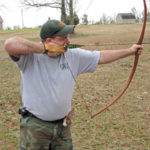
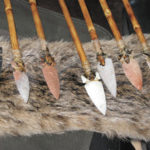
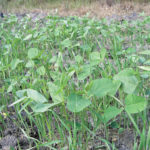
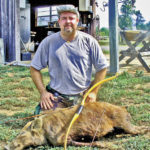



Be the first to comment